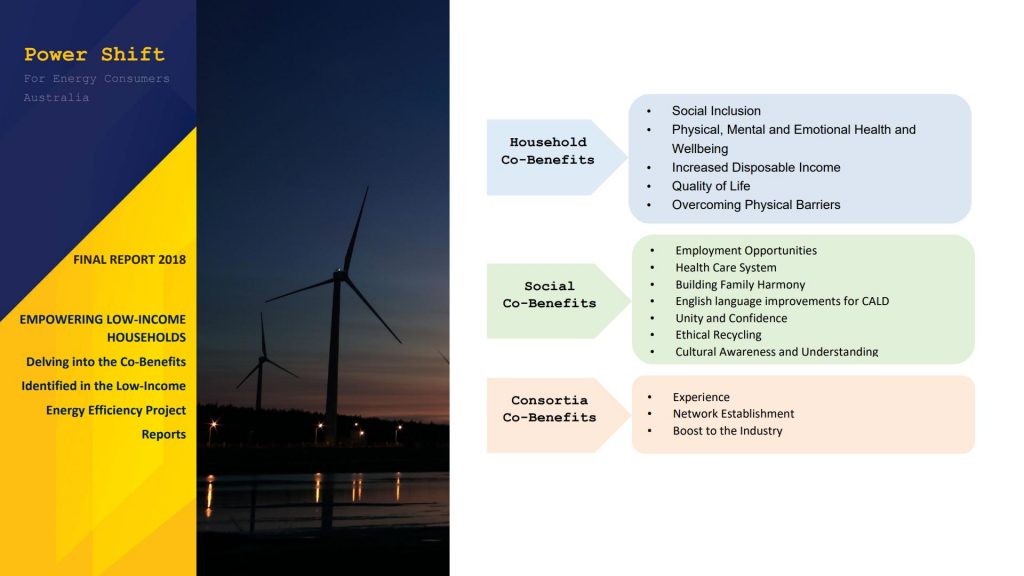The Commonwealth Government’s Low Income Energy Efficiency Project (LIEEP) investigated various ways of supporting low-income households to lower their energy use and bills. While this remained the primary focus, of significance was the findings across most projects of other key benefits experienced by participating households. These additional benefits to saving energy and bills are termed co-benefits.
Co-Benefits
Co-benefits were identified as valuable improvements for households in addition to energy savings by a majority of LIEEP projects, with 19 projects empirically measuring at least one co-benefit. These 19 projects offered a diverse array of measurement and categorisation methods for co-benefit data capture. They provided both quantitative and qualitative measures of co-benefits in participant households, with 17 projects providing quantitative measures and 5 providing qualitative measures. In addition, many key insights were provided in LIEEP reports by project partners, some of which present unique and sometimes broader co-benefits than those identified by a single household.
The purpose of this report was to unearth the co-benefit findings and insights delineated in each of the 20 LIEEP project reports and to synthesise these findings in terms of household empirical data and broad project learnings. By so doing, the full impact of LIEEP can be better understood, and the full experiences of households before and after receiving an initiative can be realised. Furthermore, this synthesis creates an opportunity for the expansion and re-definition of current definitions of energy efficiency, and exploration of the impacts it may have, not only on householders’ bills, but their wellbeing and quality of life.
Broad Findings
The 20 LIEEP projects targeted eight low-income cohorts, which ranged across six states, one territory and one national study. They trialled a combination of nine different energy savings initiatives to support 32,499 Australian households to reduce their energy use and bills, or improve their well-being. Data providing changes in co-benefits was captured for almost 4875 of these households (15%).
This project is part of the Power Shift program. GEER Australia’s full report can be read here.

